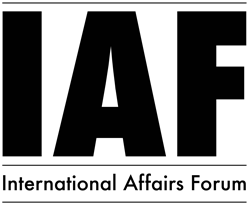| Mon. May 12, 2025 |
 |
|
||
|
||||
| ||||

The danger of miscalculations during conflict are rife in South Asia, which is home to two nuclear rivals, India and Pakistan. The recent Pahalgam incident displayed the threat of an inadvertent war exposed by the prevailing trust deficit, communication gaps, and politically charged rhetoric in the region. With the volatile political situation and lack of communication by India, the strategic environment of South Asia has become predisposed to major escalations. This makes a de-escalatory mechanism and confidence-building measures inevitable for the South Asian region.
Chronic Communication Gap as a Catalyst
The communication gap between India and Pakistan exacerbates the risk of miscalculation in South Asia. The existing communication framework is ineffective during an escalation. The military hotline, which plays a key role in defusing tensions and avoiding conflict escalation, is almost redundant. Countries in the region rely more on verbal and political signaling than using their respective hotlines during an emergency situation.
Lack of communication leads to negative perceptions and clouds the decision-making process. In the context of South Asia, the protracted conflict has become deeply entrenched and misused their judgements with a high degree of suspicion. For instance, when India abrogated articles 35A and 370, Pakistan's perception of India's expansionist agenda increased manifold. And this belief influences every diplomatic engagement and military action as a threat. It becomes harder to change perceptions once they take shape, as they continue to influence the national and international policies of the state.
Aggressive Signaling as an Escalatory Trap
The pervasive ambiguity in military and political signaling raises the escalation risks in South Asia. When politico-military tensions are ubiquitous, only clear communication can defuse the situation. Whereas, in the context of South Asia, the case is different. Charged domestic rhetoric in India, aggressive military and political signaling increase the risk of misinterpretation by the belligerent states. Against the backdrop of the Pahalgam attack, the wave of aggressive political rhetoric by the key power stakeholders in India put the situation at a heightened risk of escalation which is further exacerbated by a lack of direct communication. Such a situation contains immense potential to create a flashpoint where it becomes harder to ascertain the aggression.
In addition, the prevalent operational lapses increase the risk of miscalculation between both states. The accidental fire of the Brahmos missile serves as a stark example in this case. Despite not escalating, it is a striking reminder of the potential of technical lapses to push the region into catastrophe. Similar to this was a friendly fire incident of the Indian Air Force a few years back where six officials aboard lost lives in the Indian illegally occupied Jammu and Kashmir (IIOJK). Worse, the reluctance of the Indian Air Force to admit the loss manifested the weakness of internal accountability. Regardless of the entity, machine or human, responsible for it, incidents as mentioned above represent the menace of inadvertent war in the region.
Covering internal security lapses in the guise of blaming a foreign country is another dangerous precedent in South Asia. The Pahalgam attack was an internal security failure in the most heavily militarized zone in the world, Kashmir. The incident reflects a lack of internal accountability, for the attack happened in the country where the state of security in the IIOJK was being declared “normal”. This rhetoric is a dangerous precedent and carries the potential to increase miscalculation in the nuclearized region.
Political Environment as a Catalyst of Escalation
The political calculus of the region highly aggravated the existing situation. India uses disengagement with Pakistan, including severing trade ties and regional cooperation, as part of a broader political scheme. Indian rhetoric of “decisive revenge” is convenient for garnering domestic support. But this works at the expense of dire consequences, in which the probability of escalation to the nuclear level cannot be entirely ruled out.
Stakes are higher for Pakistan. It feels compelled to mitigate existential security threats posed by the aggressive Indian military doctrinal postures, such as the Cold Start doctrine (CSD). The presence of kinetic strategies in the CSD compelled Pakistan to maintain a credible nuclear deterrence to prevent any military intervention by the belligerent army that is twice its size. It is dangerous to have such military intervention plans on board in India, when the other side, Pakistan, sees nuclear weapons as the only deterrent to existential threats. Such a scenario can push to lower the nuclear threshold, where nuclear deterrence can both act as a source of instability as well as a stabilizing force. It will be a recipe for disaster in a highly tense region such as South Asia,
Emerging Threats to the Volatile Equation: Cyber Warfare and Water Warfare
In today's world, the risks of escalation are no longer limited to traditional military actions. In a geopolitically tense environment, nontraditional threats possess grave potential to bring a flashpoint. Even a missed shot of cyber or deliberate attempt at water warfare is taken as an “act of war”. With deliberate anonymity and greater scope, these nontraditional threats ignited the preexisting highly volatile environment. As a demonstration, after the Pahalgam attack, India accused Pakistan of hacking its four websites. This rhetoric galvanized public sentiment and successfully distorted the truth that India's grave technological lapse in cybersecurity manifested in March 2025 when even Indian Ministry of Defense's website got hacked. That attack was so disruptive that it put for sale the sensitive Indian military projects’ upgrade plans.
Similarly, the heavy dent in the Indus Water Treaty (IWT) does not carry a good omen for the region. This transboundary water distribution treaty has weathered many wars and has taken years to take shape just to be held into abeyance. Moreover l, treaty cannot be suspended and it violates the sanctity of bilateral agreements, which is a violation of the Vienna convention of laws of treaties.
Apart from this, India would take years to develop those capabilities to entirely contain the water supply to the lower riparian Pakistan. This act not only blatantly violates international law but also violates Pakistan's perception of India using water as a strategic tool against Pakistan to harm the livelihood of its citizen and GDP sectors such as agriculture. The initiation of the water warfare could push the relationship between the two countries beyond the point of no return.
Restoring Stability: The Case for the Confidence-Building Measures
The development of trust and communication is paramount to the strategic stability in the South Asian region. The international community can play a significant role in bringing these two states closer to dialogue. Technologically supported communication for the confidence-building measures (CBMs) are the need of the hour. The times have moved beyond the reliance on CBMs as mere paper tiger and the ones that actually work. Nowadays, hotlines, sensor technologies to detect territorial breaches, and joint patrols can serve to alleviate the tension between the two nuclear archrivals.
Calculating the Risks of Misperceptions
Where nuclear weapons are employed as a deterrent, misperceptions and miscalculations can lead to inadvertent use. The region has become highly volatile with a lack of communication, deeply ingrained negative perceptions, and ambiguous signaling.
Now, all it takes is an innocuous cyberattack, political rhetoric, and operational lapse to escalate animosity between the two nuclear weapon states. When states indulge in posturing and disengagement, the risk of miscalculations enhances manifold. The international community should step forward and play its part in establishing an institutionalized dialogue and confidence-building mechanism. It is high time to invest in a sustainable engagement between these two nuclear states before the rhetoric undermines the deterrence.
Anam Khan is a Research Assistant at the Centre for International Strategic Studies in Islamabad, focusing on Nuclear Diplomacy, Safety and Security, and the Peaceful Uses of Nuclear Technology. She holds a gold medal in Strategic Studies from the National Defence University. She can be reached via LinkedIn at Anam Murad Khan.
| Comments in Chronological order (0 total comments) | |
| Report Abuse |
| Contact Us | About Us | Donate | Terms & Conditions |
|
All Rights Reserved. Copyright 2002 - 2025